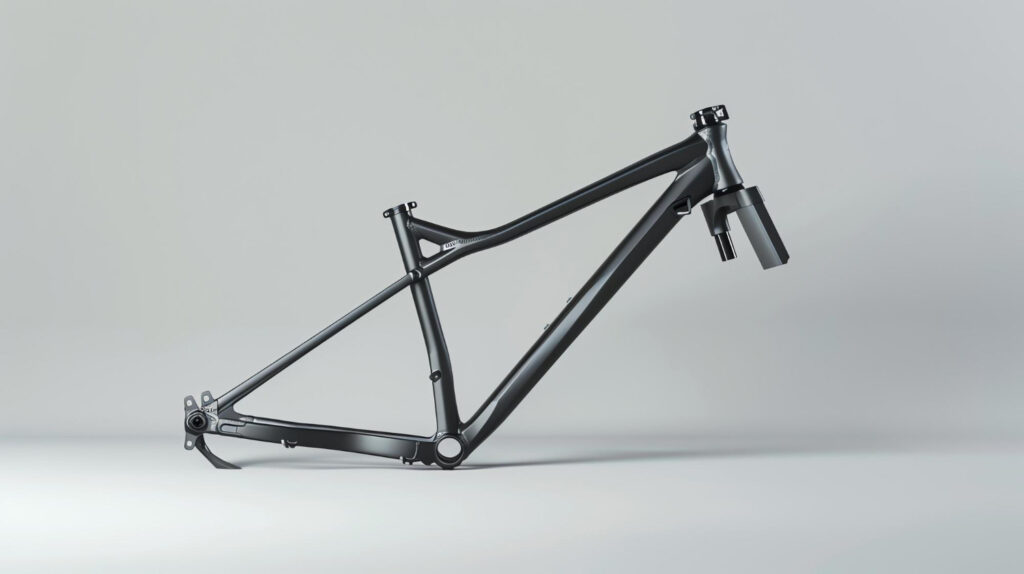Mountain Bike Geometry Explained for Beginners
When you first step into the world of mountain biking, the variety of bike options and their technical jargon can be overwhelming. One of the most important aspects to understand is bike geometry. This encompasses the dimensions and angles that define how a bike handles. By grasping these concepts, you can make informed decisions about which bike suits your style and terrain. Let’s break it down.
What Is Mountain Bike Geometry?
At its core, mountain bike geometry refers to the shape and size of the bike frame. It affects stability, agility, and overall ride feel. But what do these terms actually mean in the world of biking? Well, they matter significantly when you’re maneuvering through tight trails or speeding down steep descents.
Key Measurements to Know
To better understand mountain bike geometry, let’s go over some crucial measurements:
- Frame Size: This is the overall size of the bike and is generally measured from the center of the bottom bracket to the top of the seat tube.
- Top Tube Length: The distance from the seat tube to the head tube. It affects your reach and riding position.
- Head Tube Angle: This angle is formed by a line perpendicular to the ground and the head tube. It significantly influences handling and steering.
- Seat Tube Angle: The angle of the seat tube relative to the ground, helping determine your pedaling efficiency.
- Chainstay Length: The distance between the rear axle and the bottom bracket, impacting stability and maneuverability.
- Wheelbase: The distance between the front and rear wheels, affecting stability at speed and cornering traction.
Understanding the Impact of Geometry on Performance
So, how do these measurements translate into performance? Let’s dive into how each of these elements can influence your ride.
Head Tube Angle
The head tube angle can make or break your ride. A steep angle (usually around 70-73 degrees) is ideal for climbing, providing quick and responsive steering. On the other hand, a slacker angle (around 65-69 degrees) offers increased stability when going downhill at higher speeds. Each has its place depending on your riding style. If you love the thrill of descending, a slacker angle might be your best friend.
Seat Tube Angle
Next up is the seat tube angle. A steeper angle generally results in a more forward riding position, which aids climbing. This means your weight is shifted more over the handlebars, giving you better traction on steep slopes. If you find yourself tackling a lot of ascents, don’t underestimate the importance of this measurement. It can turn a tough climb into a manageable challenge.
Top Tube Length
Your comfort on a bike is heavily influenced by the top tube length. Longer top tubes provide a stretched-out position, which can be more comfortable for longer rides. If you tend to feel cramped while riding, you might want to look for a bike with a longer top tube to increase your reach. However, too long can sacrifice maneuverability, so there’s a balance to consider.
Chainstay Length
Moving on to the chainstay length. If you’re looking for tight cornering and agility, a shorter chainstay is beneficial. It allows the rear wheel to follow the front more closely, making it easier to navigate technical sections. Conversely, a longer chainstay provides increased stability, especially on descents. Think about your riding style. Do you chase the adrenaline or prefer a steady ride?
Wheelbase
The wheelbase is like the bike’s foundation. A shorter wheelbase enhances agility, allowing you to whip the bike around corners with ease. It’s ideal for tight, twisty trails. A longer wheelbase, however, provides stability, especially during fast descents. Choose wisely based on your favorite trails.
Finding the Right Fit
It’s not just about the numbers; it’s about how they come together to fit your riding style and body type. When you sit on a bike, how it feels is just as important as the geometry. You want one that makes you feel one with the bike, like an extension of yourself. Here are some tips for finding the right fit:
- Test Ride: Always go for a test ride. It is the best way to gauge if the geometry suits you.
- Measurements Matter: Pay attention to the measurements that impact comfort most, especially the top tube and seat tube angles.
- Riding Style: Think about where you ride most. Do you tackle steep hills or bomb down descents? Your bike should match your adventure.
- Adjustments: Remember, many aspects can be adjusted. Consider trying different handlebar rises or saddle heights to find your sweet spot.
Mountain Bike Geometry: Type of Bikes
Different types of mountain bikes offer various geometries suited for specific styles of riding. Let’s take a look:
Cross-Country Bikes
Cross-country bikes are designed for speed and efficiency. They typically have a steep head tube angle and a shorter wheelbase, which makes them nimble and quick on smooth trails. If you enjoy long rides and races over varied terrain, these bikes might be your ideal choice.
Trail Bikes
Trail bikes are versatile performers. They usually feature a balanced geometry, leaning towards a slightly slacker head tube angle. This offers a good blend of climbing efficiency and descending stability. Perfect for someone who loves to explore diverse trails with varying difficulties.
Enduro Bikes
Enduro bikes are often seen as the heavyweight champions of the mountain biking world. With longer chainstays and slacker angles, these bikes are built for tackling steep descents and technical features. If you live for the adrenaline rush of downhill challenges, you might want to consider an enduro bike.
Downhill Bikes
Lastly, there are downhill bikes. These bikes have the slackest angles, longest wheelbase, and are built to handle the gnarliest of terrains. If you’re planning to dominate the downhill circuit, this is the way to go. However, they are not great for climbing, which is something to keep in mind if you plan to traverse uphill.
Conclusion
Understanding mountain bike geometry is essential for anyone eager to get into this exciting sport. By mastering a few key principles, you can significantly enhance your riding experience. Remember, the right bike geometry translates into better control, comfort, and fun on the trails. Take your time, try different options, and choose what feels right for you. Your next thrilling mountain biking adventure awaits!






